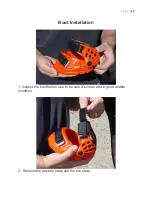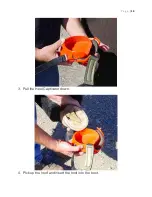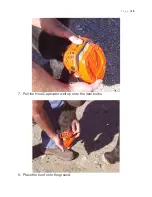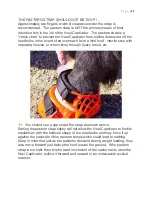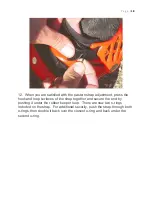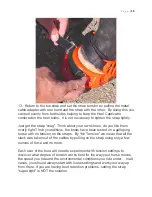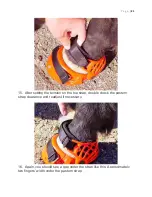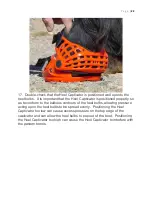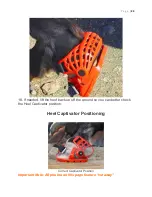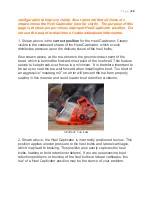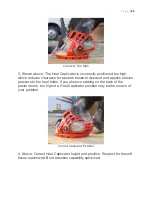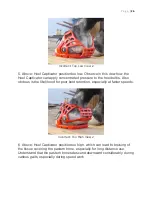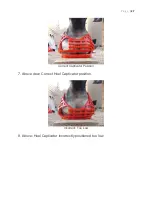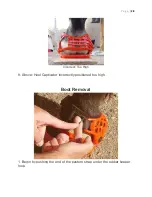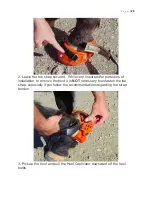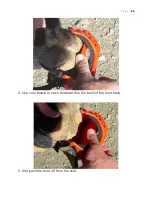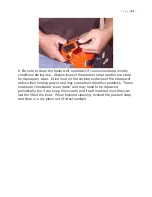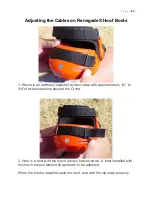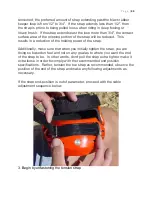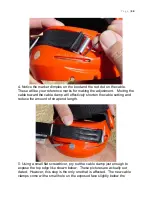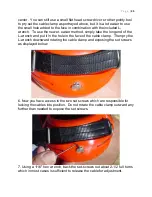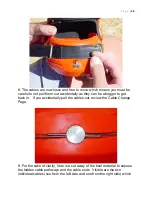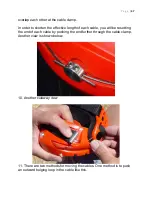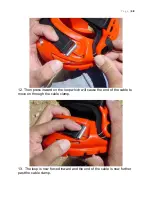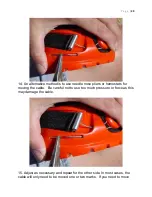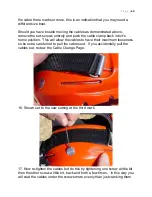
P a g e
|
25
Incorrect: Too High
3. Shown above: The Heel Captivator is incorrectly positioned too high,
which reduces clearance for pastern bones to descend and applies uneven
pressure to the heel bulbs. If you observe rubbing on the back of the
pastern bone, too high of a Heel Captivator position may be the source of
your problem.
Correct Captivator Position
4. Above: Correct Heel Captivator height and position. Respect for the soft
tissue maximized. Boot retention capability optimized.
Содержание Hoof Boots
Страница 13: ...P a g e 13 3 Pull the Heel Captivator down 4 Pick up the hoof and insert the hoof into the boot ...
Страница 15: ...P a g e 15 7 Pull the Heel Captivator well up onto the heel bulbs 8 Place the hoof onto the ground ...
Страница 58: ...P a g e 58 Yellow Gold Arizona Copper Burgundy Blitz ...
Страница 59: ...P a g e 59 Metallic Jade Choco Latte Black Knight ...


